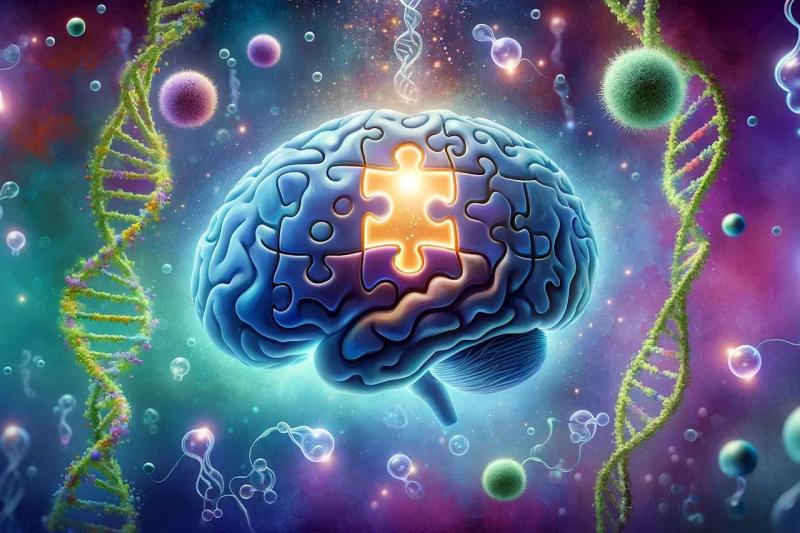Autism (Autism Spectrum Disorder – ASD)
Autism Spectrum Disorder (ASD), often referred to as autism, is a lifelong, developmental condition that affects how a person communicates, interacts with others, processes sensory input, and experiences the world around them. Each autistic individual experiences autism differently, with varying levels of needs, strengths, and challenges. Because of this diversity, the term “spectrum” emphasizes that no two people with autism are exactly the same.
Core Characteristics of Autism
Autism manifests through a range of characteristics that can include differences in communication, sensory processing, social interaction, and behavior patterns. These characteristics may vary significantly from one person to another and may change over the course of a lifetime.
1. Social Communication and Interaction Differences
- Challenges with Social Cues: Autistic individuals may find it difficult to interpret social cues such as facial expressions, body language, tone of voice, and gestures. This can make social interactions more complex and sometimes stressful.
- Difficulty with Conversations: Some autistic people may find initiating or maintaining conversations challenging. They might struggle with small talk, turn-taking, or understanding implied meanings in conversations.
- Preference for Structured Interaction: Many autistic individuals prefer predictable social interactions and may feel overwhelmed or anxious in unstructured or highly social situations.
- Nonverbal Communication Differences: Some autistic people may use limited eye contact, or they may communicate through alternative methods like pictures, writing, or assistive communication devices.
2. Sensory Processing Differences
Autistic people often experience sensory input (sights, sounds, smells, tastes, and textures) differently. These sensory experiences can range from being hypersensitive (over-responsive) to hyposensitive (under-responsive). Common sensory differences include:
- Hypersensitivity: Loud noises, bright lights, certain textures, or strong smells may be overwhelming or even painful.
- Hyposensitivity: An individual may not notice sensory input that others might, such as not feeling cold or being unaware of surrounding sounds.
- Sensory Seeking Behaviors: Some autistic people may seek out sensory experiences, such as spinning, squeezing, or touching certain textures to self-regulate or find comfort.
3. Repetitive Behaviors and Routines
- Repetitive Movements or Stimming: Many autistic individuals engage in repetitive behaviors known as “stimming” (e.g., hand-flapping, rocking, spinning objects) to help regulate emotions, manage sensory input, or provide comfort.
- Strong Preference for Routines: Predictability and routine can be comforting for autistic people. Changes to routines or unexpected events may cause distress and anxiety.
- Deep Focus on Interests: Many autistic people have strong, focused interests that they are highly passionate about. These interests can be lifelong or change over time.
Masking in Autism
Masking refers to when autistic individuals suppress or hide their autistic traits to fit in or meet social expectations. While masking can help autistic people navigate certain social situations, it often comes at a significant emotional and physical cost, leading to exhaustion, anxiety, and burnout. Masking is not a conscious choice for many people and may be difficult to stop or control.
Diagnosis of Autism
Diagnosing in Children
Autism is often diagnosed in childhood when differences in behavior and social communication are observed. Common signs include:
- Delayed speech or language development
- Difficulty making eye contact or understanding social cues
- Repetitive play or behaviors
- Limited interest in social interactions
Diagnosing in Adults
Autism can also be diagnosed later in life. Many adults seek a diagnosis after recognizing traits that have affected their daily lives, often when other neurodevelopmental conditions or mental health challenges (e.g., anxiety, depression) are present. Diagnosis often involves:
- Behavioral assessments
- Input from family members or caregivers
- Questionnaires and interviews about social behavior and communication
Autism as a Spectrum
The word “spectrum” emphasizes the wide range of experiences, strengths, and challenges faced by autistic individuals. Some people may require significant support in daily life, while others may live independently. Autism is not a linear progression; the way someone is affected can change over time and across environments.
Terminology: Talking About Autism
- Identity-First Language: Many autistic people prefer to describe themselves as “autistic” because it acknowledges autism as an integral part of their identity (e.g., “I’m autistic”).
- Person-First Language: Some people use terms like “person with autism” to emphasize that the person comes before the condition. Preferences vary, so it is important to ask individuals how they would like to be addressed.
Causes of Autism
While the exact cause of autism is not fully understood, it is thought to involve a combination of genetic and environmental factors:
- Genetics: Autism often runs in families, with hundreds of genes believed to be involved. However, having a family history of autism does not guarantee that a child will develop it.
- Brain Differences: Studies using brain scans have found structural and functional differences in the brains of autistic people. Some research suggests possible differences in the size of certain brain regions or the function of neurotransmitters (brain chemicals).
- Other Factors: Premature birth, low birthweight, and certain genetic conditions (e.g., Down’s syndrome) are associated with a higher likelihood of autism.
Related Conditions and Co-occurring Challenges
Many autistic people also experience other conditions, such as:
- Attention Deficit Hyperactivity Disorder (ADHD)
- Anxiety Disorders
- Learning Disabilities
- Epilepsy
- Gastrointestinal Disorders
- Sensory Processing Disorders
Autism can also be associated with genetic conditions like Down’s syndrome and fragile X syndrome.
Treatment and Support for Autism
There is no “cure” for autism, but interventions and support can help autistic individuals navigate challenges and build on their strengths:
- Therapies: Speech therapy, occupational therapy, behavioral interventions, and social skills training can support communication, daily living skills, and social interaction.
- Education Plans: Individualized Education Plans (IEPs) and tailored school supports help meet the needs of autistic students.
- Family Support: Providing education, training, and counseling for families can improve the overall well-being of autistic individuals.
- Assistive Technology: Tools and devices can support communication and daily living.
Support and accommodations tailored to each individual’s needs can greatly enhance their quality of life. Understanding and acceptance of neurodiversity are key in creating inclusive and supportive environments for autistic people.







